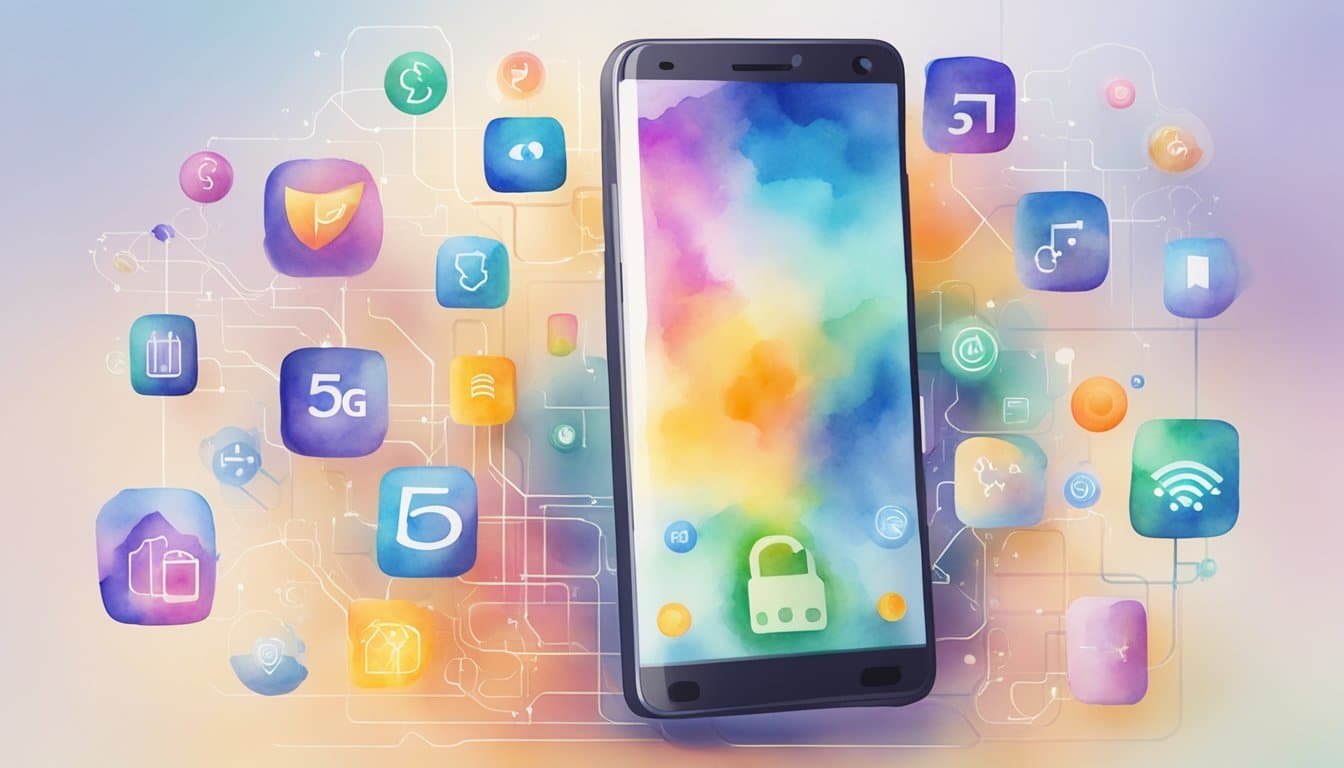Understanding 5G Technology
Diving into the world of 5G technology opens up a vista of blisteringly fast speeds and decreased latency, marking a significant leap over its predecessors. This section uncovers what 5G truly entails, from its evolutionary journey to its transformative capabilities.
Evolution From 2G to 5G
The path from 2G to 5G is a narrative of constant innovation in the communication spectrum. 1G brought us analog voice, 2G introduced digital voice and SMS, 3G ushered in mobile internet, and 4G LTE streamlined high-speed internet on the go. Each “G” represents a significant upgrade in technology, speed, and user experience.
Defining 5G and Its Capabilities
5G stands for fifth-generation technology, designed to enhance device connectivity and overall network performance. Not just about speed, 5G boasts impressive capacity, allowing more devices to be connected with minimal impact on performance. It’s also poised to drive innovations in fields like remote surgery, autonomous vehicles, and the Internet of Things (IoT).
5G Speed and Performance
5G is the fastest mobile network technology yet, capable of reaching peak data rates of up to 20 Gbps. It drastically cuts down latency to as low as 1 millisecond, facilitating real-time applications where rapid response is crucial. The substantial bandwidth improvements mean that 5G can transmit more data at higher speeds, a game-changer for both consumers and industries.
Low, Mid, and High-Band Frequencies
5G operates across low, mid, and high-band frequencies, each offering different balances of speed and coverage. Low-band offers wide coverage and penetration but at lower speeds. Mid-band strikes a balance with faster speeds and reasonable coverage. High-band, also known as mmWave, offers the highest speeds and capacity but has limited coverage and requires more infrastructure like small cells.
5G Infrastructure and Deployment

With the advent of 5G, communication takes a giant leap forward, courtesy of the new infrastructure and novel deployment techniques. This section dives into how carriers are expanding their reach, the new cellular hardware making waves, and the regulatory dance of balancing spectrum needs.
Carriers and Coverage Expansion
Major carriers like Verizon, AT&T, and T-Mobile are aggressively rolling out 5G to deliver higher speeds and more reliable service nationwide. These carriers are racing to cover both bustling cities and quieter rural areas, ensuring a wider 5G footprint. For instance, Verizon aims to cover some of the most remote areas with ultra-fast speeds, while AT&T and T-Mobile are also vying for extensive 5G coverage.
5G Cell Towers and Small Cells
The 5G landscape is dotted with innovative cell towers and small cells. Unlike traditional cell towers, 5G relies on a dense network of these small cells to amplify coverage and capacity, especially in areas with complex topographies or heavy data traffic. Small cells can be discreetly placed throughout urban landscapes to provide a continuous and robust connection that keeps cities humming.
Spectrum Allocation and Frequency Bands
The Federal Communications Commission (FCC) plays a pivotal role in the allocation of the radio spectrum, crucial for 5G spectrum band allocation. The much-talked-about C-band, consisting of radio frequencies that are ideal for 5G networks due to their blend of coverage and capacity properties, is a prized asset for carriers. The FCC ensures that these bands are fairly distributed and manages the frequencies to prevent interference, keeping our digital skies clear.
5G in Devices and Applications

The advent of 5G is revolutionizing how gadgets communicate and function, bringing rapid data transfer and low latency to a wide range of applications.
Smartphones and 5G Compatibility
Leading manufacturers like Samsung and Apple have been quick to adopt 5G technology, integrating it into their latest smartphones. This allows users to experience faster download and upload speeds, responsive gaming, and improved streaming quality. Most new smartphones are now 5G compatible, meaning consumers can connect to 5G networks where available.
IoT and Connected Devices
The IoT, or Internet of Things, encompasses a massive network of connected devices that communicate and exchange data. With 5G’s high speed and low latency, IoT devices can operate more efficiently, fostering innovations in smart home technology, wearables, and industrial applications that businesses can leverage.
5G’s Role in Autonomous Technologies
Futuristic transport solutions like self-driving cars and autonomous vehicles rely heavily on 5G for real-time data processing and decision-making. Augmented reality applications, which blend digital information with the physical world, are similarly enhanced by 5G, offering more immersive experiences for gaming and various other sectors including healthcare and education. The synergy of 5G and AI is also paving the way for advanced robotics that can perform complex tasks with greater autonomy.

